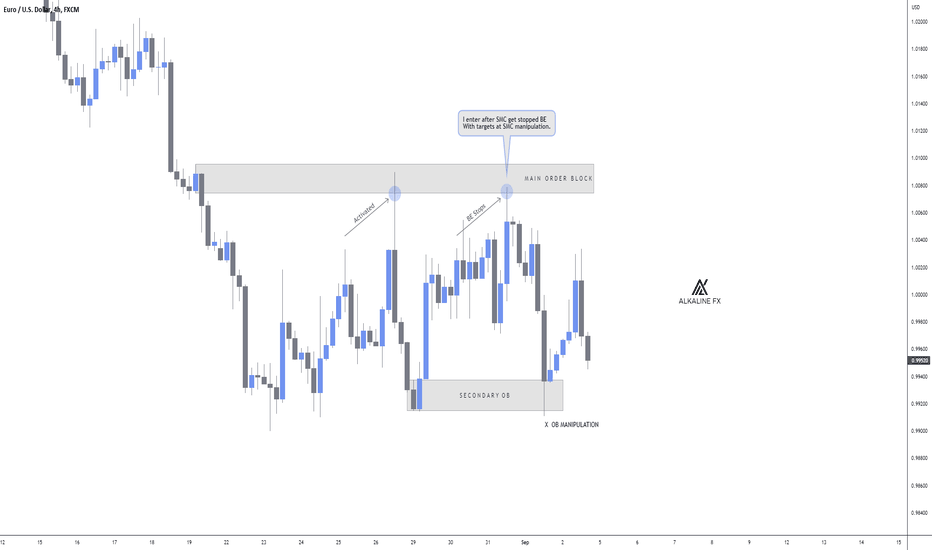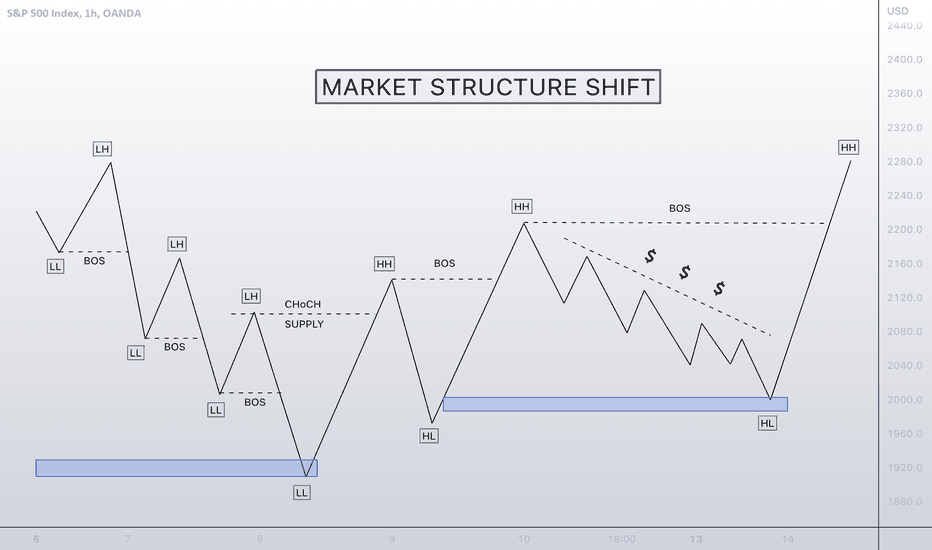SMC
Smart Money Manipulation 🥊Alkaline is back baby! 💣
As smart money concepts gain popularity, liquidity increases.
I have taken a month away from trading to study the new forms of market manipulation and have been pleasantly surprised by what I have found.
Here is my discovery:
1) The market is currently focusing on taking liquidity from breakeven positions over fixed stop losses.
This is because emotional traders put their stops to BE quickly to avoid pain, especially during indecisive markets.
2) Order blocks are the perfect manipulation areas.
If you take time out to backtest significant order blocks, you will notice price will tap and lure or simply sweep above/below the zone before going in the intended direction.
3) That tight stop loss you are using is doing more damage than good.
Scale into your positions, trust me when I say this will reduce your emotions and give you a more relaxed trading style.
4) Use your brain, even if you are in denial.
If the majority of traders lose money, and the majority of traders now use smart money concepts, do the maths.
It feels good to be back after a long month of studying, I have lots of new things to teach and share.
I will be taking on new students shortly, have a great weekend everyone 👋
Volume profile confirmationsWatch this clip to learn how the volume profile can be used as an extra confirmation when looking for optimal entry criteria.
Mini Course : Order Block Course Hi Trader's ,, How Are You Today ? Enjoy In Holiday ,, Buy Don't Forget To Learn Too In Holiday ..
Let,s Take A Very Fast And Mini Course For : Order Block ,,
First : What IS The Order Block Mean ?
Answer : There Are Many concepts For Order Block ,, But the Real And Easily concepts For It Is " Order Block it's The Area There Banks And Big Companies Take There Orders From it "
Second : How To Get It On Chart ?
Answer : We Have 2 Patterns For It ,, Bullish And Bearish As You Se On Chart ,,
In Bullish We Have 2 Way ,, In Down Trend We Get " Low ' High ' Lower High ' Higher High ' Lower High " Then Enter Our Trade
Or In Also Down Trend We Get " Low ' High ' Lower Low ' Higher High ' Lower High " Then Enter The Trade ..
In Bearish Pattern We Also Have 2 Way To Entry ,, In Up Trend We Get " High ' Low ' Higher Low ' Then Break Out The Low And Test It And Entry "
Stop Lose Be Above The Area With 20 - 40 Pips Only
IF You Get New Information From me ,, Please Like And Comment
What to do when you do not have any good POIsWatch this video to learn how to adjust your thought process when the market does not give you any valid POIs to work with. I struggled with this for a long time.
BULLISH ENTRY EXAMPLE 🔥🔥🔥Usually, liquidity is calculated by taking the volume of trades or the volume of pending trades currently on the market. Liquidity is considered “high” when there is a significant level of trading activity and when there is both high supply and demand for an asset, as it is easier to find a buyer or seller.
Hope this example can help some people understand when trading.
Imbalance, POI, and Confirmation entry back test/case studyThis video is longer than my usual however I explain what an Imbalance is and how it can be used to trade within the markets. I also go through a replay back to show it can be used to catch confirmation entries. Any feed back is greatly appreciated.
Discount/ premium pricing - SMC📉 We use the Fibonacci retracements for spotting discount and premium levels in a range.
📝 We draw the Fibonacci tool from the bottom to the top in an uptrend, and from the top to the bottom in a downtrend.
Terminologies:
EQL: equilibrium = a state of physical balance (50%).
Discount: we buy from
Premium: we sell from
To make it more approachable, we can compare using the fib tool as a scanner when you go to the supermarket. You won't buy the product when it's expensive, but only buy when it's cheap. Beside that - if we want to sell a product to a supermarket, we want to get the highest price as possible.
Combining it with order blocks
You can basically increase the probability of order blocks with the fib tool. Order blocks that are not in discount you won't buy from, and order blocks that are not in premium you won't sell from.
🤓 🤓 MARKET STRUCTURE SHIFT! SMCMarket structure in Forex trading or price action is how many people take advantage of the markets. No indicators, and no volume. Because the market does not have a centralised exchange. Forex traders often swing trade the market based on the structure to take advantage of the opportunity.
Structural market change is broadly defined as a shift or change in the way in which a market or economy functions or operates.
I have tried my best to show you in the easiest possible way to look out for. Save this to your notes for future reference.






















